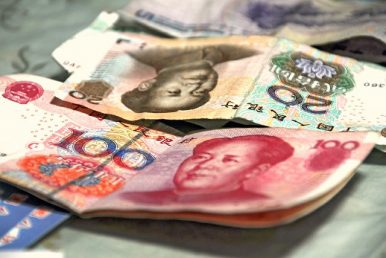By Mie Oba
 In early May, the 22nd ASEAN+3 Finance Ministers’ and Central Bank Governors’ Meeting made a significant decision. The Chiang Mai Initiative (CMI), a mechanism for foreign currency exchange in times of emergency created under ASEAN+3, had previously been regarded as a pool of foreign exchange reserves accessible by the countries concerned as a U.S. dollar loan. At this meeting, however, it was decided to permit local currency swaps.
In early May, the 22nd ASEAN+3 Finance Ministers’ and Central Bank Governors’ Meeting made a significant decision. The Chiang Mai Initiative (CMI), a mechanism for foreign currency exchange in times of emergency created under ASEAN+3, had previously been regarded as a pool of foreign exchange reserves accessible by the countries concerned as a U.S. dollar loan. At this meeting, however, it was decided to permit local currency swaps.
The decision is a nod to the use of the mechanism in cross-border transactions in Asian local currencies such as the yuan and the yen, and the growing demand for it as a currency for foreign exchange reserves. More importantly, given the various uncertainties and instabilities threatening the economy of East Asia, such as the protracted and intensifying antagonism between the United States and China and the resulting downturn in China’s economy, the decision is an attempt by East Asian countries themselves to create a regional financial system as a response to the unforeseen circumstances of the region.
Originally, the Chiang Mai Initiative was established in 2001 as a tool for regional financial cooperation, drawing on the lessons learned from the Asian financial crisis of 1997. Starting out as a bunch of swap agreements, the mechanism became the Chiang Mai Initiative Multilateralism (CMIM) in 2009, after the region was hit once again, this time by the Global Financial Crisis. Through the CMIM, the ASEAN countries, Japan, China, and Korea concluded identical swap agreements, and the procedures between authorities for issuing currency swaps were standardized. These countries now share the same swap agreement, while inter-agency procedures between authorities for triggering currency swaps were standardized. In 2014, funding doubled from $12 billion to $240 billion.
Thus, the Chiang Mai Initiative came about as a result of the economic crisis that rocked Asia, and was strengthened by that crisis. In recognition of the current uncertainty and instability, an attempt was made to further strengthen the cooperation mechanism through the diversification of the so-called available currency, which uses not only dollars but also local currency as a currency pool in times of crisis.
This is also in line with China’s original policy of promoting internationalization and may lead to a further strengthening of China’s influence in East Asia. However, more important to note is the fact that these developments show that a move toward breaking away from a dependence on the dollar – which has already been discussed by some since the Global Financial Crisis – is now becoming a reality at the level of financial cooperation in East Asia.
The U.S.-China showdown has effectively shifted production bases from China to Southeast Asian countries in the short term, a situation for East Asia that some observers liken to the proverb, “When two dogs fight for a bone, a third runs away with it.” However, there are concerns that this prolonged confrontation will not only result in a further deceleration of China’s economy, but could also destabilize the security environment in the region. East Asian countries, while wanting the stability of the current international monetary system with the U.S. dollar as a key currency, are trying to prepare for unforeseen situations by strengthening regional cooperation.
Immediately prior to the meeting, China held (the Second) Belt and Road Forum for International Cooperation, where it was forced to dispel concerns about “debt-trap” diplomacy posed by an excessive reliance on Chinese money. Xi Jinping stated in his opening speech of the Forum that China would adopt “widely accepted rules and standards,” and “encouraged participating countries to follow general international rules and standards” when promoting its projects. This shows the limits of imposing China’s approach on other countries, as well as indicating the need for certain common rules and standards that are acceptable not only to major powers but to lesser powers too, in order to bring long-term sustainable development and stability to the region.
Despite its image as the region’s most powerful nation, China is not omnipotent. In this current environment of uncertainty and instability, if the region wants stability and development, common rules and standards need to be established by all stakeholders, together with a multilateral cooperation framework to adapt those rules and standards to actual conditions in the region. This reform of the Chiang Mai Initiative is evidence that not only China but authorities in other countries understand this. It may take an actual crisis and a growing sense of that crisis in each country to achieve multilateral cooperation.
Mie Oba is a professor at the Tokyo University of Science.
No comments:
Post a Comment